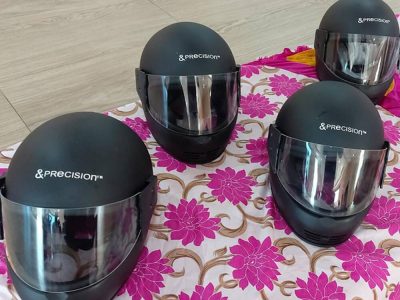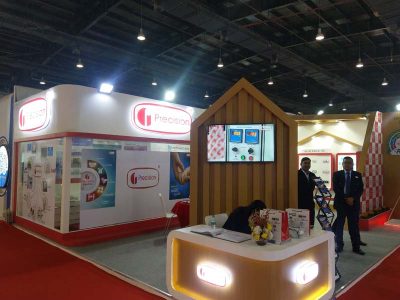
Surface, Concealed, & Gang Boxes: Attributes & Applications of these Electrical Boxes
October 13, 2021
4 Ways to Consider Modular Switches While Renovating Your Room
November 17, 2021Electrical Safety in this Festive Season
As Diwali phases its way into the calendar, people kindle their households with a festive spark, mentally preparing for many days and nights with family members, friends, and other guests.
There are also physical preparations made: rooms reserved for visiting siblings, recipes finalized, and, last but certainly not least, decorations.
Some neighbours involve their wholesome competitive spirit in the process of creating their home aesthetic, and a lot of thought is put into how the rangolis are presented, the string and strand lights are arranged, and where the diyas are lit.
However, there is one thing that tends to be forgotten in this time of merriment and relaxation: electrical safety. With the added lighting, house activities, and appliances of the season, the load on your electrical circuits can be greater than usual, and this can cause a few complications which you will need to anticipate and prevent.
Here, we outline 5 tips on how to safeguard your lighting equipment, electrical outlets, and children during this time.
Check if your Outdoor Lights and Extension Cords are Rated for the Outdoors
One of the biggest mistakes homeowners can make in the festive season is to decorate the exterior of their homes with indoor lighting. Indoor lights are not rated to withstand the elements—rain, direct sunlight, cold, wind—and this can cause damage, failure, even short circuits. Often, these lights can be susceptible to water infiltration and that will naturally lead to short circuits and the like. Lighting manufacturers and their retailers sell specialized outdoor lights rated to handle the harsher weather outdoors. Make sure to pick these!
Choose LED lights and Make Sure you String them over Non-Flammable Material
String LED lights not only are more energy-conservative that most lighting in the market today, but they also are less of a fire hazard. They will help you save money and will give you as much as regular lighting output with multiple lifespans. When you are draping your string lights over exterior and interior objects, plants, and architectural features, make sure they are all sufficiently non-flammable or fire retardant. For shrubs and trees, make sure the plant is well-watered so that even if it caught fire, the spread would be slow, and you would have enough time to extinguish it. Support the wires of the string light on your walls via insulating tape or a screwed hook made of insulating material. This reduces risk by a considerable degree.
Don’t Overload Extension Boards & Power Strips
One of the major plot points of electrical usage during a festive season is that more appliances are loaded onto the supply: kitchen appliances at work for family dinners, music systems connected for fun-filled parties, decorative lighting all over and outside the house, and much more.
Because of this, the role of electrical accessories like extension boards becomes crucial to provide electrical power to the appliances. And the protection of these accessories begins to matter more. Extension boards, when overloaded, take on more electrical current than is safe, which damages the appliances. If the combined wattage of your lights exceeds that of your board, it can overheat. To solve this, remove devices that are not in use and distribute your string lights among multiple extension boards.
The good thing is that LED lights use a relatively low amount of power, so you can plug in several LED light strings without worrying about overheating. As for the rest of your appliances being used, every once in a while just touch the board’s cord to measure its temperature. If it’s hot, unplug it.
Connect Your Extension Boards to GFCI outlets
However, even if you take all the requisite steps to ensure your extension boards are safe, danger can still emerge. In the outdoors, water can infiltrate the wires and string lighting, and your home’s electrical outlets and circuits could get damaged as a result. To kill this problem at the source, you can try connecting your extension board to a Ground-Fault Circuit Interrupter (GFCI) outlet. GFCI electrical outlets contain circuit breakers that swiftly cut off supply as soon as they detect a short circuit or overcurrent. They are usually installed in damp or water-sensitive areas of the house, such as the bathroom, balcony, or terrace. They can be easily found in electrical stores and self-installed. However, it is still advisable to call a professional to do this.
Inspect and Install Electrical Protection Devices: MCBs & RCCBs
Circuit breakers are the most important electrical protection devices in a home. They “trip” the supply on account of short circuit or overcurrent or electrical leakage through unsafe contact or water—saving lives, devices, and wires.
Miniature circuit breakers (MCBs) safeguard various sections of the house, and they are often used in series with residual current circuit breakers (RCCBs). The former is used to stop any overcurrent or short circuit, while the latter is more specifically targeted to the mishaps that happen when someone or something mistakenly touches a live wire/socket.
Before your house is inundated with an influx of family members, friends, and other guests, it is important to make sure these devices are in working order. This will ensure that your mind is in that comfortable space before the festivities start. Should you need any help with the understanding and purchasing of these electromechanical devices, you only need to contact and consult with an experienced electrical supplier like Precision Electricals.



































































